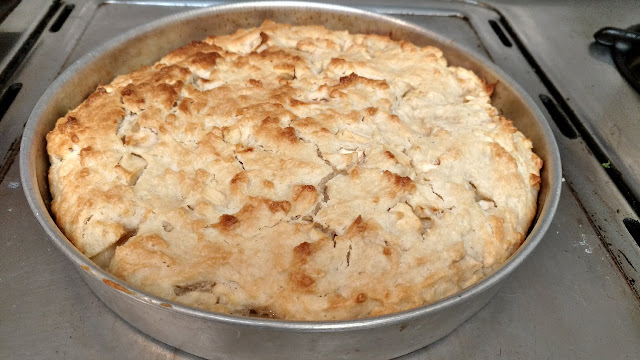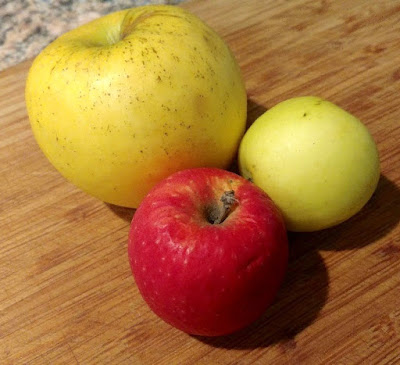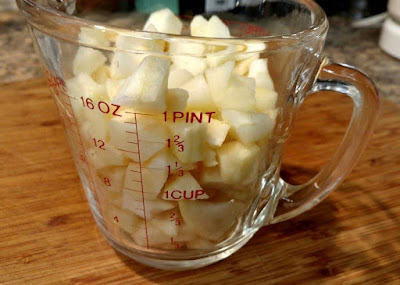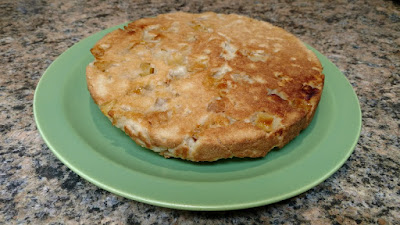
Recipe: Connemara apple cake has true Irish roots

it resembles a large scone. (Photos: Debbie Arrington) |
In honor of St. Patrick’s Day, this Irish country recipe offers comfort and a lot of apple flavor.
Connemara apple cake comes from “The Irish Heritage Cookbook” by Mercedes McLoughlin and Marian McSpiritt (Tribeca Books), a 1984 collection of Old Country family recipes collected by the authors and friends in Ireland. This is an adaptation of that heritage recipe.
The result turns out more like a giant (and moist) buttermilk scone than a cake, with lots of big juicy chunks of apple. Unlike most apple cake recipes, there’s no added spice – no cinnamon or nutmeg. So the apple flavor really comes through.
It’s a pleasant Irish twist on a breakfast or coffee cake; of course, it would be fine for tea, too.
Speaking of apples, the last of my fall harvest went into this almost-spring recipe. They had kept crisp after months in the refrigerator. They may not have been the prettiest or the biggest apples, but they worked fine in this cake and still tasted great.

in the cake. |
Here’s another Irish "recipe" adapted from the same heritage cookbook and handed down for generations:
An Irish recipe for happiness
4 cups love
2 cups loyalty
3 cups friendship
Other ingredients to taste
Take love and loyalty and mix thoroughly with faith. Blend with tenderness, kindness and understanding. Add hope, sprinkle abundantly with laughter. Bake mixture with sunshine.
Serve generous helpings daily to your family, friends and all you meet.
(With maybe some Connemarra apple cake on the side.)
Connemara apple cake
Adapted from “The Irish Heritage Cookbook” by Mercedes McLoughlin and Marian McSpiritt
Makes 6 servings

nice and moist. |
Ingredients:

like a scone. |
Comments
0 comments have been posted.Sacramento Digs Gardening to your inbox.
Sites We Like
Garden Checklist for week of July 21
Your garden needs you!
* Keep your vegetable garden watered, mulched and weeded. Water before 8 a.m. to reduce the chance of fungal infection and to conserve moisture.
* Feed vegetable plants bone meal, rock phosphate or other fertilizers high in phosphate to stimulate more blooms and fruiting. (But wait until daily high temperatures drop out of the 100s.)
* Don’t let tomatoes wilt or dry out completely. Give tomatoes a deep watering two to three times a week.
* Harvest vegetables promptly to encourage plants to produce more. Squash especially tends to grow rapidly in hot weather. Keep an eye on zucchini.
* Pinch back chrysanthemums for bushy plants and more flowers in September.
* Remove spent flowers from roses, daylilies and other bloomers as they finish flowering.
* Pinch off blooms from basil so the plant will grow more leaves.
* Cut back lavender after flowering to promote a second bloom.
* It's not too late to add a splash of color. Plant petunias, snapdragons, zinnias and marigolds.
* From seed, plant corn, pumpkins, radishes, winter squash and sunflowers.